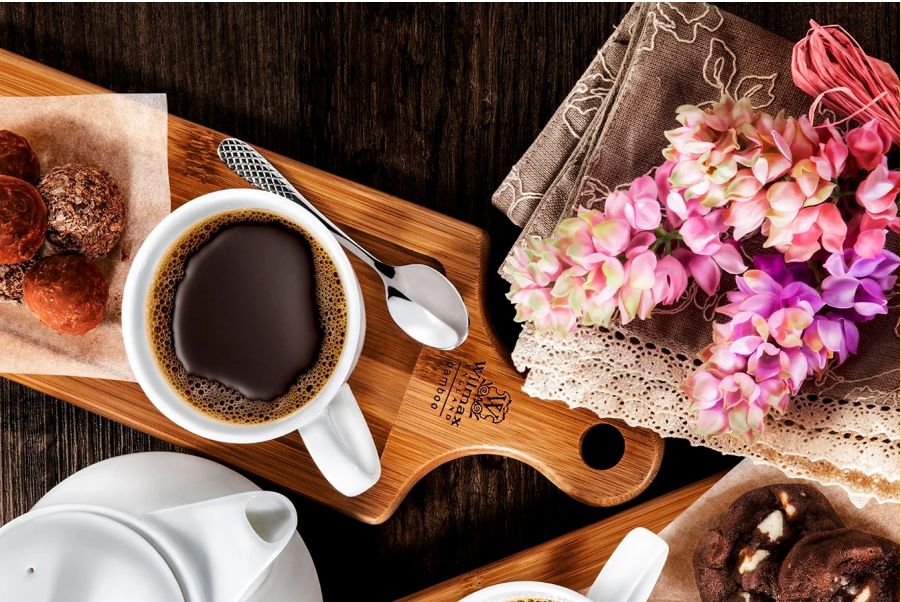Savory Goes Sweet: The Rise of Salted Desserts and Umami Pastries

Miso caramel, soy brownies, and parmesan ice cream — breaking every rule of sweetness.
Once upon a time, dessert was predictable: sugar, cream, and a safe promise of sweetness. But today’s pastry chefs are rebelling. They’re adding salt, soy, cheese, and even seaweed — turning dessert into an act of surprise. The world’s most exciting sweets are no longer just sugary; they’re savory, complex, and deeply layered. Welcome to the era of umami indulgence.
In kitchens from Tokyo to New York, bakers and chocolatiers are challenging the notion that sugar equals pleasure. Instead, they’re proving that the best desserts make you pause, think, and crave another bite — not from sweetness, but from balance.
When Salt Became Sexy
The turning point came quietly: a sprinkle of fleur de sel on caramel. That tiny pinch of salt transformed a candy classic into a global obsession. It sharpened the sweetness, deepened the butter, and added that irresistible “one more bite” effect. What began as a French trick has now evolved into a worldwide movement — one where salt doesn’t tame sugar, but completes it.
Salted chocolate, salted honey, salted maple — they’ve become icons. Yet modern chefs didn’t stop there. The next generation began exploring ingredients far beyond the shaker: miso, soy, olive oil, parmesan, mushroom, even truffle. Their mission? To add depth to dessert — not just decadence.
“We’re no longer chasing sweetness,” says Dominique Aubert, pastry director at Paris’ Maison Grise. “We’re chasing balance — the moment when your tongue doesn’t know if it’s dessert or dinner.”
The Alchemy of Umami
The secret behind this revolution is umami — the “fifth taste” once confined to soups and sauces. Found in aged, fermented, or roasted ingredients, umami adds richness without sugar. In pastry, it behaves like magic: amplifying flavors, grounding sweetness, and leaving a lingering satisfaction long after the bite.
Take miso caramel, a superstar of the movement. The salty soybean paste introduces a toasty depth that cuts through sugar’s monotony. Or soy brownies, where a splash of tamari intensifies cocoa’s natural bitterness, creating a rounder, darker chocolate. Even parmesan ice cream — once a culinary dare — now appears on fine dining menus worldwide for its buttery, nutty finish.
“Sweetness needs contrast,” says Tokyo pastry artist Hana Fujimoto. “Umami is that contrast — it makes desserts addictive without being cloying.”
Chefs Breaking the Sugar Ceiling
In the world’s leading restaurants, pastry chefs are rewriting the rulebook. At Copenhagen’s Noma, seaweed-infused chocolate and mushroom ganache push boundaries of taste and texture. In Los Angeles, olive oil cakes come with black pepper gelato. In Milan, burrata meets white chocolate and basil. The new desserts no longer mimic candy — they borrow from cuisine.
These dishes embody a philosophy: dessert as dialogue, not indulgence. They make the diner question — not just consume. Every spoonful is a conversation between opposites: creamy and salty, crisp and buttery, sweet and savory. It’s emotional, not just edible.
And surprisingly, these new desserts are healthier. By using less sugar and more flavor-forward ingredients, chefs create satisfaction without overload. Pleasure, redefined through restraint.
Home Bakers Join the Flavor Revolution
This savory-sweet awakening isn’t confined to haute cuisine. Home bakers, too, are experimenting with pantry staples that add umami. A teaspoon of miso in cookie dough deepens flavor. A drizzle of olive oil over brownies adds silkiness and sophistication. A dusting of flaky sea salt can transform even the simplest chocolate chip cookie into a sensory event.
For the adventurous, parmesan shortbread or sesame panna cotta are easy entry points. Both blur the line between appetizer and dessert — elegant enough for dinner parties, simple enough for Sunday baking. It’s about curiosity over conformity.
“Once you taste that interplay of salty and sweet,” says London baker Chloe Martins, “you can’t go back. Sugar alone feels flat.”
Design Meets Dessert
The new dessert aesthetic is as bold visually as it is in flavor. Think earthy palettes — golden browns, slate grays, creamy beiges — replacing neon sprinkles and pastel frosting. Plating embraces minimalism: matte ceramics, organic shapes, restrained garnishes. It’s dessert as design object — quietly luxurious, intentionally imperfect.
Even café menus are adopting the look. Pastries are photographed on dark backgrounds with moody lighting, emphasizing texture and tone rather than color. Miso-glazed tarts gleam under subtle highlights; olive oil cakes absorb the light like soft velvet. The effect is sensual and modern — a visual extension of flavor restraint.
Dessert, once whimsical, has grown up. It’s sophisticated now — the culinary equivalent of a jazz chord instead of a pop hook.
The Psychology of Salted Sweetness
Why are we so drawn to the savory twist? Neuroscience offers a clue: contrast amplifies pleasure. When sweetness meets salt or umami, our brains light up — perceiving intensity and complexity. It’s the same reason we crave chocolate-covered pretzels or caramel popcorn. The duality excites us; it keeps the palate engaged and the mind curious.
Cultural curiosity also plays a role. As diners grow more global, so do their expectations. We’ve tasted everything — now we seek surprise. The fusion of sweet and savory satisfies that modern appetite for discovery. It feels intelligent, adult, and just a little rebellious.
And like all culinary shifts, it reflects a deeper cultural mood: a rejection of excess in favor of nuance. Sugar rushes are out. Subtle satisfaction is in.
The Future of Dessert Is Balanced
The rise of salted and umami desserts signals a broader evolution in how we think about indulgence. The future of dessert isn’t about deprivation — it’s about dimension. More layers, more thought, more soul. It’s culinary minimalism meeting emotional complexity.
As menus continue to blur the lines between savory and sweet, expect to see even bolder combinations: blue cheese truffles, tomato sorbets, seaweed caramels, mushroom financiers. What once sounded outrageous will soon feel inevitable. After all, the best flavors — like the best ideas — live in contrast.
In this new world of dessert, sugar plays second fiddle. The real star is harmony — the art of making opposites dance on your tongue.
The age of simple sweetness is over — the future of dessert is deliciously complicated.
Share:





